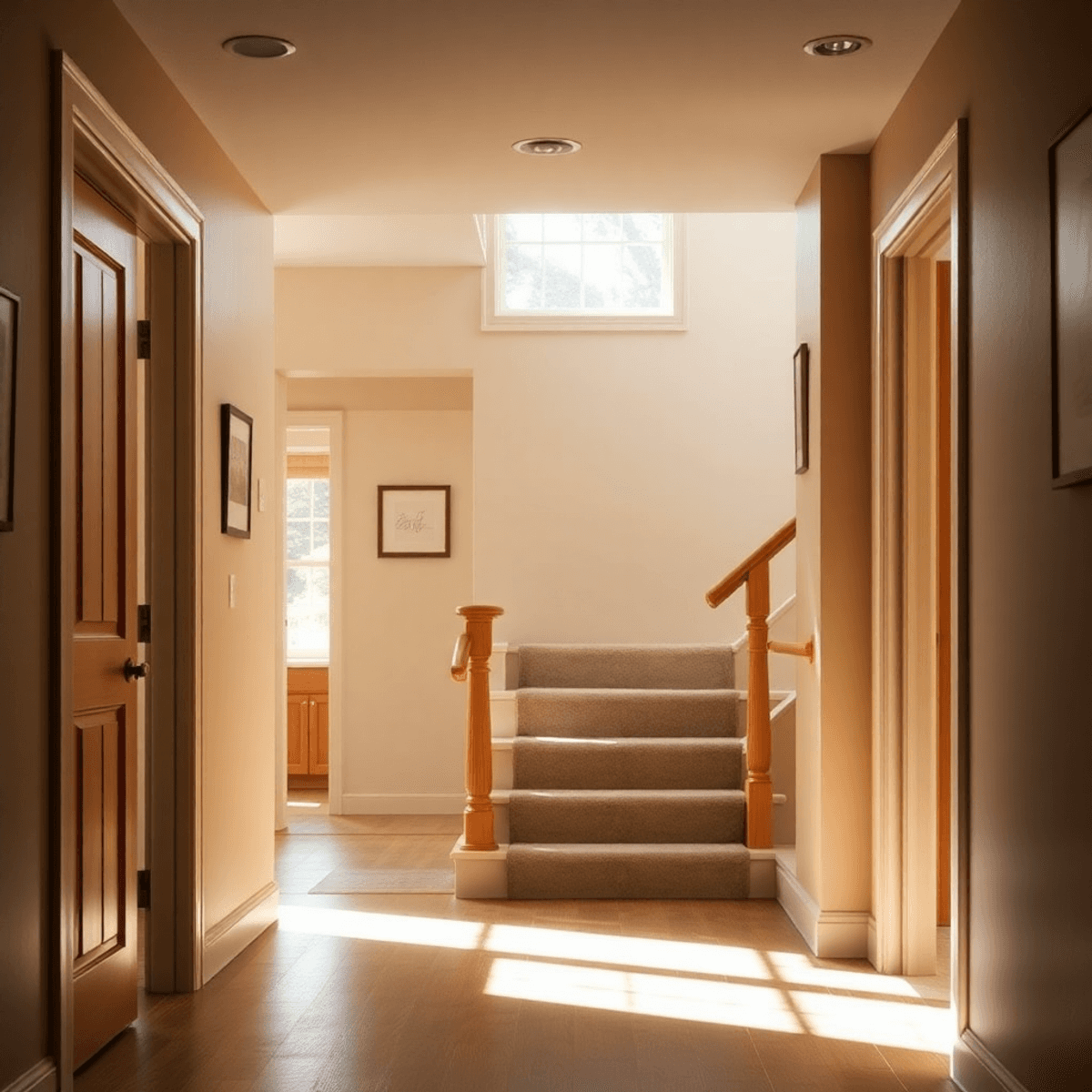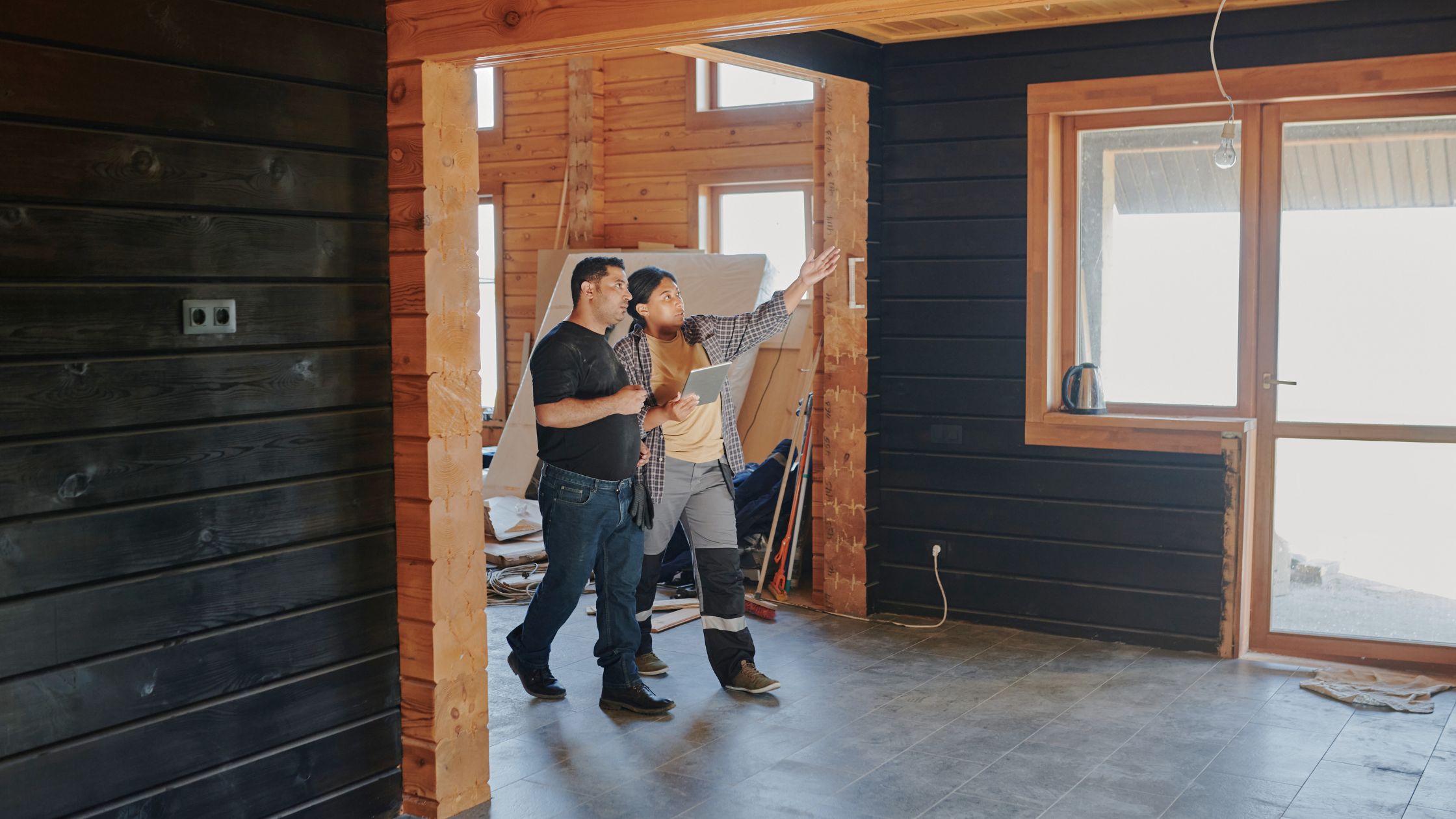Aging-in-Place Remodeling: Adapting Your Illinois Home for Senior Living Comfort
Aging-in-Place Remodeling: Adapting Your Illinois Home for Senior Living Comfort focuses on transforming homes so seniors can continue living safely and comfortably in familiar surroundings. Aging-in-place remodeling means making thoughtful changes to support mobility, accessibility, and daily routines as needs change with age. In Illinois, where family ties and neighborhood connections run deep, adapting homes for senior living comfort allows older adults to remain close to their communities.
Key benefits include:
- Enhanced safety: Reducing fall risks and household hazards through modifications like grab bars, slip-resistant flooring, and improved lighting.
- Promoted independence: Seniors maintain control of their routines without relying heavily on outside assistance.
- Emotional well-being: Remaining in a cherished home supports dignity, comfort, and lasting social relationships.
Adapting your home for aging-in-place isn’t just about construction—it’s about preserving quality of life right where it matters most. This often involves choosing the best materials for your Illinois renovation, which can significantly impact the overall outcome of the remodeling project. It’s also important to consider sustainable building materials that are not only environmentally friendly but also durable and cost-effective.
Moreover, kitchen remodeling is a crucial aspect of aging-in-place renovations. The kitchen is often the heart of the home, and ensuring it’s safe and accessible can greatly enhance a senior’s quality of life. In some cases, these remodeling projects may involve insurance work, which can help cover some costs associated with necessary modifications.
Understanding Aging-in-Place Remodeling
Aging-in-place remodeling focuses on making changes to homes so that older adults can live there comfortably and safely as their needs change. This approach is based on the principles of aging-in-place, which aim to create spaces that are safe, accessible, and comfortable without compromising on style or independence.
The Importance of Universal Design for Seniors
One key aspect of aging-in-place remodeling is universal design for seniors. This means incorporating features that are beneficial for people of all ages and abilities. Here are some examples:
- Zero-step entries for easy access
- Wider doorways and hallways to accommodate wheelchairs or walkers
- Fixtures that are simple to use, such as lever handles and touchless faucets
Going Beyond Temporary Fixes
When it comes to home modifications, it’s important to go beyond temporary solutions. General contractors offer customized solutions that address changing physical needs over time. For instance, they can install adjustable countertops or bathroom fixtures that cater to mobility limitations. These thoughtful updates anticipate future challenges and empower residents to maintain their independence in daily activities.
Ensuring Adaptability with Universal Design Principles
By embracing universal design principles, aging-in-place remodeling ensures that homes in Illinois remain flexible, functional, and inviting as physical requirements evolve with age. For example, when remodeling kitchens, these principles can be applied to improve usability while preserving visual appeal.
Prioritizing Safety and Security
During renovations for aging in place, it is essential to prioritize security measures in order to create a safe living environment for seniors. This may involve installing secure locks, enhancing lighting systems, or implementing other safety features throughout the home.
Addressing Potential Water Damage Restoration Needs
In addition to the aforementioned modifications, homeowners should also be mindful of potential water damage restoration requirements that may arise over time. Such issues can significantly impact the home’s suitability for aging in place. It is crucial to promptly address any water damage concerns in order to maintain a healthy and secure living space for older adults.
Moreover, when considering these renovations under the umbrella of aging-in-place remodeling, it’s important to ensure compliance with local regulations such as those outlined in NRS 338. These laws provide a framework for construction practices which can further enhance the safety and functionality of homes adapted for senior living.
Key Safety Enhancements for Senior Homes in Illinois
Prioritizing senior home safety in Illinois means minimizing fall and accident risks, the leading causes of injury among older adults. Addressing these hazards directly through thoughtful remodeling makes daily life safer and less stressful.
1. Grab Bars and Handrails
Installing grab bars in bathrooms and sturdy handrails on all staircases provides essential support where slips are most likely. These features help prevent falls during transitions in and out of showers or when navigating steps.
2. Slip-Resistant Flooring
Upgrading to slip-resistant flooring for seniors—such as textured tile or water-resistant vinyl flooring which is perfect for entertainment spaces—significantly reduces the risk of slipping, especially in wet areas like kitchens and bathrooms.
3. Improved Lighting
Enhanced lighting, including brighter bulbs and motion-activated fixtures, increases visibility throughout the home. Well-lit spaces help seniors spot obstacles before they become hazards.
4. No-Step Entries
Removing entryway thresholds and eliminating unnecessary steps creates no-step entries. This adaptation allows for smoother mobility, making it easier whether using a walker, wheelchair, or simply moving about with confidence.
Simple enhancements like these build a foundation of safety, making it possible to remain independent while enjoying peace of mind throughout the home. Additionally, considering outdoor living trends can further enhance the living experience by creating a safe yet enjoyable outdoor environment. For those looking to improve their home’s functionality, exploring options like a finished basement could provide additional space while maintaining safety standards.
Bathroom Modifications Tailored for Seniors
Accessible bathroom remodeling is essential for supporting daily independence and safety. Illinois homeowners often choose walk-in or roll-in showers designed with built-in benches, providing a stable place to sit while bathing. These showers eliminate tripping hazards and make entering and exiting much easier.
Barrier-free shower designs equipped with anti-scald valves protect against sudden water temperature changes, which is especially important for seniors with sensitive skin. Wall-hung sinks create more floor space, allowing wheelchair users to roll directly underneath the basin for comfortable access.
Elevated or ADA-compliant toilets offer a higher seat height, reducing strain on knees and hips. Pairing these toilets with grab-bar rated accessories gives seniors additional support when sitting or standing. Each of these updates aligns with best practices in Aging-in-Place Remodeling: Adapting Your Illinois Home for Senior Living Comfort, ensuring the bathroom remains both functional and secure as physical needs change.
In addition to these modifications, it’s also important to consider storage solutions. Implementing smart bathroom storage ideas can help maximize your bath space, making it more organized and accessible for seniors.
Kitchen Adaptations to Enhance Accessibility and Comfort
A senior-friendly kitchen remodel in Illinois often starts with lowered countertops and cabinets to make everyday tasks more accessible. Counter heights can be adjusted to accommodate wheelchair users or anyone who finds standard heights difficult, putting less strain on the back and shoulders. For tips on maintaining a clean and organized space, check out these tips to keep your kitchen counter neat and clean.
- Pull-out shelves and drawers: These become essential for reducing the need to bend or reach deep into cabinets. These features allow for easier access to pots, pans, and pantry items. Implementing smart storage ideas can further help in reducing clutter and maximizing space.
- Lever-style handles: On faucets and appliances replace traditional knobs, making it much easier for those with limited grip strength or arthritis to operate kitchen fixtures.
- Smart kitchen appliances: The integration of with large displays provides clear, readable controls. Ovens, refrigerators, and microwaves designed for seniors offer simple touch interfaces, voice activation, and safety shut-offs.
These targeted changes transform daily cooking routines into safer, more comfortable experiences while supporting independence in the heart of the home. For inspiration on such remodels, you can explore this kitchen remodel project in Fox Lake, Illinois.
Improving Home Entryways and Mobility Features
Creating an accessible home entry in Illinois starts with thoughtful changes that make moving in and out of the house safer and easier. Wider doorways—at least 36 inches—accommodate wheelchairs and walkers, eliminating common obstacles for seniors. Replacing traditional round door knobs with lever-style handles provides a better grip, especially for individuals with arthritis or limited hand strength.
Key Features for Accessible Home Entryways
Here are some key features to consider when improving home entryways for accessibility:
- Wider Doorways: Ensure that doorways are at least 36 inches wide to accommodate wheelchairs and walkers.
- Lever-Style Handles: Replace traditional round door knobs with lever-style handles for easier gripping.
- Ramp Installations: Install ramps at entrances to eliminate the need for navigating stairs.
- Smooth Walkways: Create smooth walkways leading up to the entrance to ensure easy access.
- Non-Slip Materials: Use non-slip materials such as concrete or composite decking for walkways and ramps to prevent falls.
Ramp installations or smooth walkways serve as essential senior mobility ramps, removing the need to navigate stairs at entrances. These features not only support wheelchair-friendly doorways but also reduce trip hazards during icy Illinois winters. Materials like non-slip concrete or composite decking add traction, further minimizing the risk of falls.
“Upgrading to wider doors and adding a ramp made my parents’ home welcoming again—no more struggles with steps or tight spaces,” shares an Illinois homeowner.
Prioritizing these entryway upgrades ensures every resident and visitor can move freely, promoting independence without sacrificing safety or curb appeal.
Technology Integration for Enhanced Safety and Convenience
Technology plays a vital role in Aging-in-Place Remodeling: Adapting Your Illinois Home for Senior Living Comfort. Modern senior home technology Illinois solutions focus on enhancing daily safety and making independent living easier.
1. Visual Alert Systems
Visual alert systems are now widely available for doorbells, smoke detectors, and telephones. These systems use flashing lights or vibrating alerts designed specifically for individuals with hearing loss or diminished hearing—common challenges among seniors. A visual alert system ensures that every important notification is accessible, reducing risks and boosting confidence at home.
2. Appliances with Easy-to-Use Controls
Appliances with easy-to-use controls help support independence in the kitchen and throughout the home. Seniors benefit from large displays, simplified buttons, and tactile feedback, all of which reduce frustration and make daily tasks more manageable. Leveraging appliances featuring large displays with simple controls allows users to cook, clean, and control their environment without relying on outside assistance.
Smart home devices can be tailored to individual needs, bringing increased safety and peace of mind to Illinois households as residents age in place.
Working with Certified Aging-in-Place Specialists (CAPS) in Illinois
Certified Aging-in-Place Specialists (CAPS) provide essential professional aging-in-place remodeling guidance for Illinois homeowners. These experts bring a deep understanding of universal design and safety standards specific to senior living environments.
Why Work with CAPS in Illinois?
1. Planning and Execution
CAPS specialists in Illinois handle every phase of the remodeling process, from initial consultation to project completion. Their training ensures that modifications are not only effective but also compliant with the latest codes and accessibility best practices. This includes expert design and planning, which is crucial for a successful remodel.
2. Safety Standards
You gain peace of mind knowing that all changes—whether grab bar installation or major structural updates—are performed according to rigorous safety protocols.
3. Personalized Evaluations
Every senior has unique needs. CAPS professionals conduct thorough, individualized assessments, developing personalized care plans for seniors that address mobility challenges, medical considerations, and daily routines.
Working with a CAPS-certified remodeler means your project is managed by someone who prioritizes comfort, dignity, and long-term independence through tailored solutions.
Cost Considerations and Financial Benefits of Aging-in-Place Remodeling in Illinois
The cost of aging-in-place remodeling in Illinois can vary significantly, ranging from budget-friendly home modifications for seniors to full-scale renovations. Typical investments look like this:
- Minor updates such as grab bars, lever handles, and improved lighting: $500–$3,000.
- Mid-range upgrades like walk-in showers or widened doorways: $5,000–$15,000.
- Extensive renovations (kitchen overhauls, ramps, or multi-room redesigns): $20,000–$50,000+.
When compared to the ongoing expense of assisted living—averaging $4,500 per month in Illinois—remodeling provides a significant long-term savings. Many homeowners find that a one-time investment in accessibility pays off within a year or two when weighed against monthly facility fees.
Homeowners often describe the process as a balance between essential safety features and desired comforts. Prioritizing needs with the help of a specialist allows families to craft effective solutions that fit their financial situation while maintaining dignity and independence at home. This might include budgeting for your Lake County remodel, which can involve minor updates or more extensive renovations such as kitchen overhauls or adding a cedar pergola for outdoor comfort. Alternatively, some may opt for screen houses to enjoy the outdoors while remaining safe and comfortable at home.
Emotional and Social Benefits of Aging in Place in Familiar Surroundings
Emotional benefits aging in place often begin with the comfort that comes from remaining in a familiar environment. Seniors in Illinois report feeling less anxious and more secure when surrounded by personal possessions, cherished memories, and routines established over decades. Maintaining control over daily life—choosing meal times, decorating spaces, or tending to a backyard garden—fosters dignity and reinforces a sense of purpose.
Supporting Mental Health
Familiar environment comfort also plays a significant role in supporting mental health. Recognizable sights, sounds, and even neighborhood layouts help reduce confusion or disorientation, especially for seniors managing cognitive changes or memory loss. The predictability of home offers reassurance during times of transition.
Maintaining Social Connections
Social connections are another key advantage of aging-in-place remodeling: adapting your Illinois home for senior living comfort means continued access to nearby friends, neighbors, and community resources. Local Illinois neighborhoods often feature strong social ties—longstanding relationships with mail carriers, local shop owners, or faith groups can offer daily encouragement and companionship.
“After remodeling our Oak Park bungalow with wider doorways and a safer bathroom, my mother could keep attending her church luncheons every week,” shares one Illinois homeowner. “She feels seen and valued—not just safe.”
Stories like these highlight how senior independence Illinois goes beyond physical safety. Aging in place supports emotional resilience and an active social life, making the familiar home environment not just a backdrop but an essential part of well-being as we age.
Home Modifications for Comfort and Functionality
In terms of home modifications to support this lifestyle, options such as adding a screened porch or sunroom can greatly enhance comfort while providing more space for relaxation or social gatherings. Additionally, transforming an old basement into a functional area can further improve living conditions, making the home not only safer but also more accommodating for the needs of seniors.
Conclusion
Aging-in-Place Remodeling: Adapting Your Illinois Home for Senior Living Comfort brings lasting advantages to seniors and their families. By focusing on safe senior homes adaptation, you create an environment that encourages independence, security, and daily comfort.
Key aging-in-place benefits summary Illinois families experience:
- Enhanced safety: Thoughtful modifications minimize risks of falls or injuries.
- Greater independence: Seniors maintain control over their routines in familiar surroundings.
- Emotional well-being: Remaining at home preserves dignity and cherished memories.
- Stronger community ties: Staying engaged with neighbors supports ongoing social connections.
Choosing to remodel now empowers your loved ones to thrive at home for years to come.
If you’re considering ways to support a parent or family member in Illinois, explore the potential of aging-in-place remodeling. Each change you make can transform not just the layout of a house—but the quality of life within its walls.
One significant aspect of such remodeling could involve expanding your living space. If you’re in Lake County, you might want to consider second-story additions vs. main-floor expansions. Each option has its unique advantages and can be tailored to meet the specific needs of your loved ones while enhancing their comfort and safety.
FAQs (Frequently Asked Questions)
What is aging-in-place remodeling and why is it important for senior living comfort in Illinois?
Aging-in-place remodeling involves adapting homes to meet the changing needs of seniors, allowing them to live safely and comfortably in their own Illinois homes. This remodeling enhances safety, independence, and emotional well-being by addressing mobility challenges and creating a supportive environment tailored for senior living comfort.
What are the key safety enhancements recommended for senior homes in Illinois?
Key safety enhancements include installing grab bars in bathrooms and handrails on stairs, applying slip-resistant flooring, improving lighting, and creating no-step entries by removing thresholds or steps. These modifications help prevent falls and accidents, ensuring a safer living space for seniors.
How can bathrooms be modified to better accommodate seniors in Illinois homes?
Bathrooms can be tailored with walk-in or roll-in showers featuring benches and barrier-free designs with anti-scald valves. Wall-hung sinks accommodate wheelchair access, while elevated or ADA-compliant toilets equipped with grab-bar rated accessories enhance safety and accessibility for seniors.
What kitchen adaptations improve accessibility and comfort for seniors in Illinois?
Senior-friendly kitchen remodels include lowering countertops and cabinets for easier reach, incorporating pull-out shelves and drawers to reduce bending, using lever-style handles on faucets and appliances, and integrating smart appliances with large displays designed specifically to support independent living among seniors.
How does technology integration enhance safety and convenience in senior homes in Illinois?
Technology such as visual alert systems for doorbells, smoke detectors, and telephones tailored to seniors’ needs improves safety. Additionally, appliances with large displays and simple controls support independent living by making everyday tasks more accessible and manageable for seniors.
Why is working with Certified Aging-in-Place Specialists (CAPS) beneficial when remodeling senior homes in Illinois?
CAPS-certified professionals provide expert guidance in planning and executing remodeling projects that comply with best practices and safety standards. They offer personalized safety evaluations and care plans based on individual needs, ensuring that aging-in-place remodeling effectively supports the health, comfort, and independence of Illinois seniors.
news via inbox
Nulla turp dis cursus. Integer liberos euismod pretium faucibua








